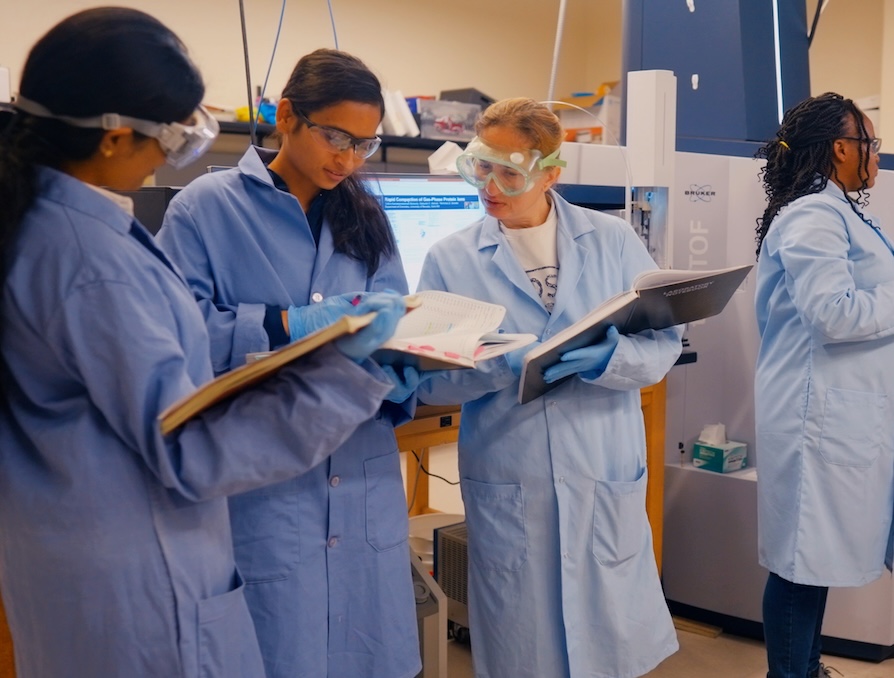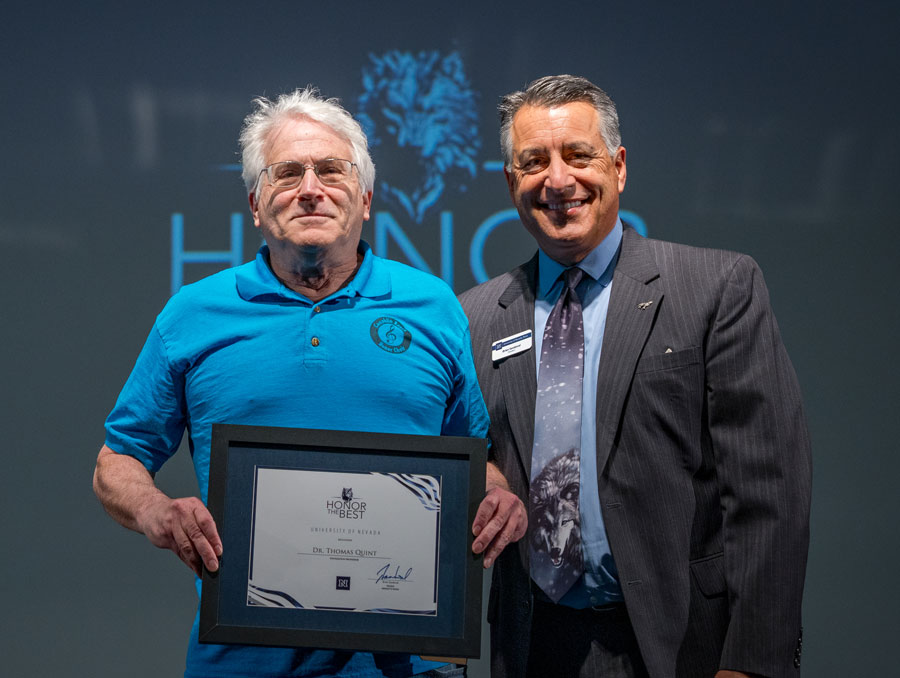In this first-person narrative, Hannah Mitchell and Mia Allison, graduate students in the Department of Geography at the University of Nevada, Reno, tell Nevada Today about their experiences working with Assistant Professor Julie Loisel, Ph.D., studying tropical peatlands in the Caribbean.
“Imagine you are hiking through the jungle, not sure where the guide is taking you, when, all of a sudden, you start sinking into the mushy ground.

When we signed up for this expedition for the summer of 2023, we did not fully understand what we were getting into. At the time, Mia was an undergraduate student looking to gain some fieldwork experience and Hannah was a new graduate student preparing to start the following spring. Alongside Dr. Julie Loisel and her international colleagues, we were off to Costa Rica in search for peatlands, a wetland ecosystem critical to the global carbon cycle. These ecosystems form over thousands of years and sequester gigatons of carbon that can be released into the atmosphere if degraded. Peatlands are also excellent proxies for past environmental conditions by preserving organic material due to anoxic conditions slowing down decomposition. Typically, peatlands have been commonly found in the high latitudes, but there has been new evidence showing wide distributions of peat in the tropics. We would be among the first groups to confirm the presence of peat in the wilds of Costa Rica.
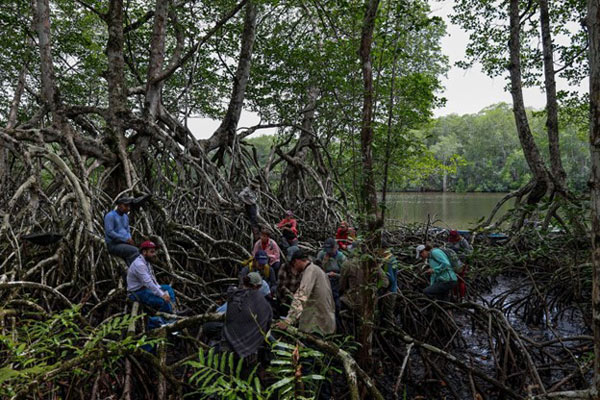
Arriving in Costa Rica, we were greeted by the vibrant views of the lush tropics. However, our time in the bustling city was soon over as we headed off to begin our journey. We traveled all over Costa Rica, from the mountains to the Caribbean coast, searching for peat in remote locations. We experienced many different ecosystems on our expedition, such as bogs, mangroves, and palm swamps that are remarkably challenging to traverse through. To reach the peatlands, we had to trudge through muddy or flooded grounds, often falling down or getting stuck in the mud. There were no trails to these sites, and even with a guide, we would be creating our own paths through the dense vegetation with machetes. These strenuous conditions could make the long days even harder, but our team of researchers and students persevered and supported one another throughout the journey. To cross the tough terrain (including what we nicknamed “mud pits”), we helped each other find the best ways to cross; we stuck large sticks into the ground for something to grab onto as we walked, formed human chains by holding hands to help with stability, and even made pseudo bridges out of fallen palm leaves and branches to help stop us from sinking into the mud. But finding peat made everything worth it. With the guidance of Dr. Loisel, we found more peat than we could have hoped for and brought back over 30 peat cores to be analyzed in the laboratory at the University.
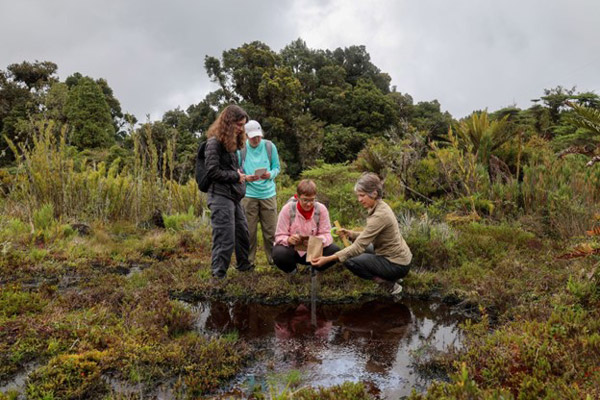
At the end of the trip, it’s safe to say that we were not the same as we were before. The long days in the field were challenging yet rewarding. We encountered amazing people along the way and experienced Costa Rican nature and wildlife in a way that we never would have without being a part of this expedition. We made lasting memories such as drinking out of fresh coconuts, seeing three out of four Costa Rican monkey species in the wild, finding frogs (along with other critters) in our hotel rooms, collapsing into mud pits, trying local cuisine, learning all about peat and how to core it, and so much more. Coming home, it felt almost impossible to leave the tropics and the bonds we made with one another behind. Dr. Loisel talks about true fieldwork being a lost art, and after this journey, we can’t help but agree. This quest for peat taught us so much more than we would’ve in a classroom or through literature. We were immersed in the wildlife and being there in person helped us to realize the beauty and importance of peatlands.
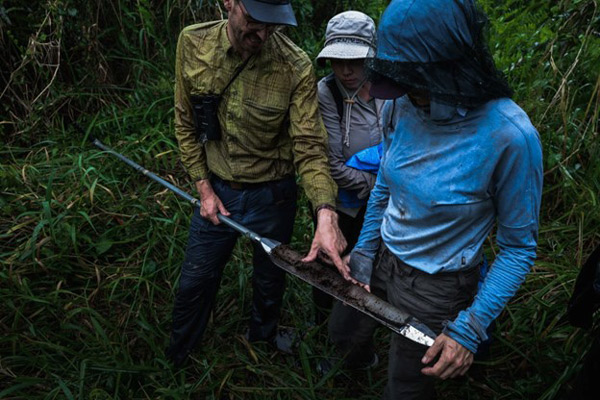
This experience fueled our passion for understanding and conserving these critical ecosystems. There is nothing that replaces the intimacy of real fieldwork with the land and the connections we make with one another. For Mia, this expedition is a huge reason why she is at the University of Nevada, Reno today. Being in Costa Rica, conducting fieldwork in such a beautiful and extraordinary place, and learning about what peatlands are and why they are important, inspired her to want to continue this research. For Hannah, it strengthened her commitment to studying peatlands and sparked new questions for her project. She’s curious about long-term carbon accumulation and the drivers behind the formation of peat in these ecosystems. We are extremely thankful for this opportunity and want to thank not only Dr. Loisel but also her colleagues from all over the world who assisted us on this expedition. This life-changing voyage would not be possible without the contributions of other earth scientists and geographers before us.”

